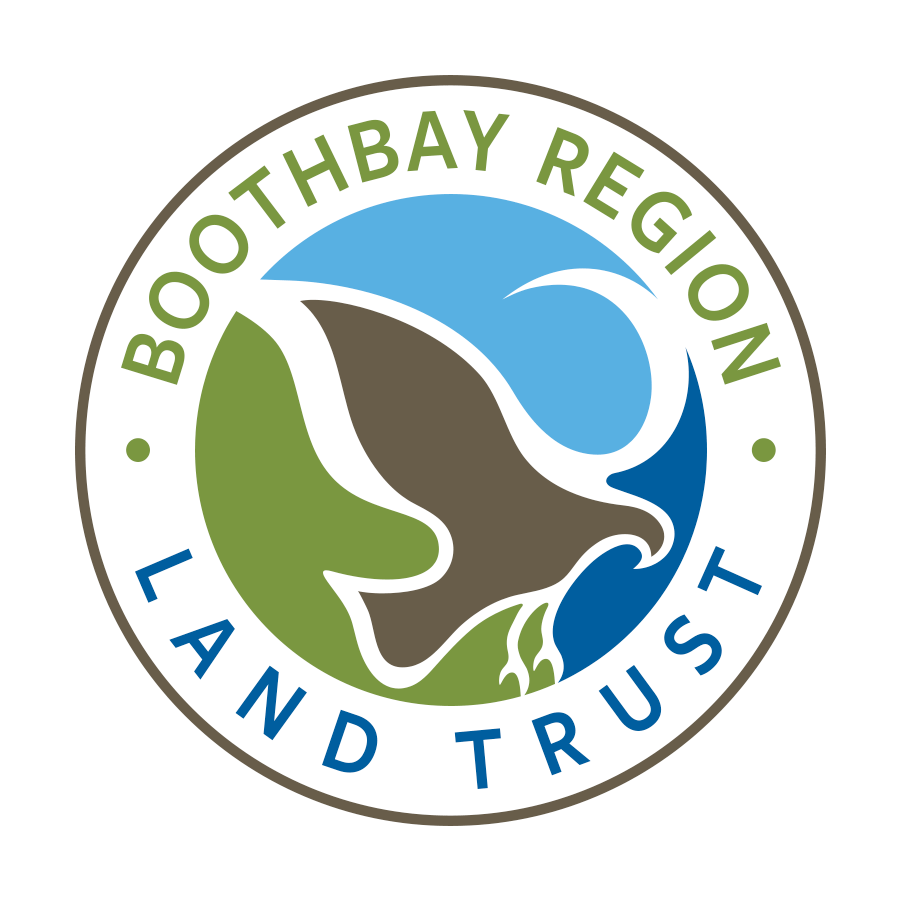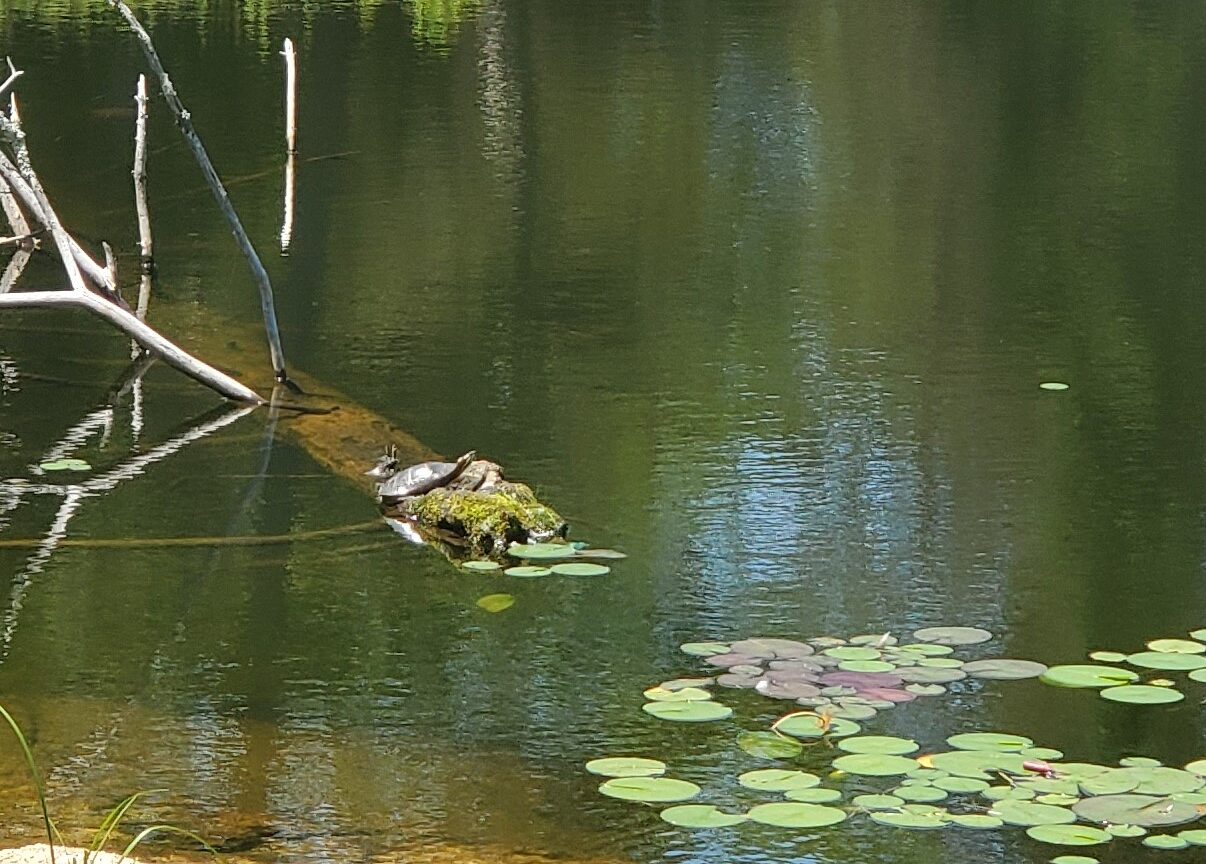July 13: Turtle Talk
My nickname is turtle. It’s not because I move slowly or hide in my shell, but instead originated when I taught at an outdoor school where we were required to have a nature nickname for students to call us. I have always felt an affinity for turtles, and since it alliterated nicely with my first name, I selected it. Twenty years later, I still have children calling me turtle, and I still feel fondly about these reptiles. That is why I have been excited over the past few weeks to encounter several turtles on BRLT preserves.
Maine is home to 7 species of freshwater turtles, 4 of which are endangered, threatened, or of special concern. On the Boothbay peninsula, there are 2 species of turtle you are likely to see, the painted turtle and snapping turtle. Every year I see hand painted signs along the roads alerting motorists to neighborhood turtles, along with helpful folks that stop their cars to help them cross. Roadsides are a common place for us to encounter turtles, as it provides a path of least resistance to and from wet areas, and the soft gravel shoulder is a perfect place to bury eggs.
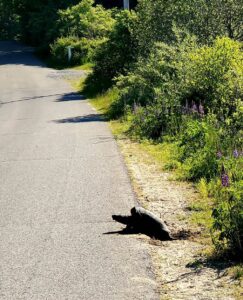
A female snapping turtle builds a nest near Porter Preserve.
In June, I encountered a snapping turtle building a nest near the entrance to Porter preserve. She was using her hind legs to dig a shallow bowl-shaped hole in some sandy soil, while her head and front legs reached out onto the pavement of Kimballtown road. I gave her space and didn’t stay long, but if I had I might have seen her lay a few dozen creamy white ping pong ball sized eggs. After that, she would cover the nest and return to the water for another year. If everything goes well, by the end of summer the next generation of snapping turtles will move into the nearby pond. But it hardly ever goes that smoothly.
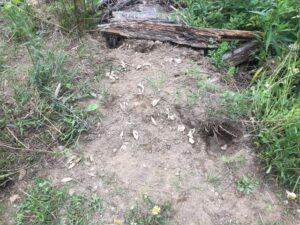
A raided snapping turtle nest at Lobster Cove Meadow Preserve.
The nests are an easy meal to egg-loving predators such as skunks, foxes, raccoons and crows. Once the hatchlings dig their way out of the nest, they may be consumed by the same predators or raptors, large fish, snakes, and otters. Last week a BRLT volunteer shared some photos of a turtle nest he found near the dam at Lobster Cove Meadow Preserve, that appeared to be dug up by a predator. All that remained were the remnants of leathery egg shells. It is estimated that less than 10 percent of turtle hatchlings make it to adulthood. But even adult turtles aren’t safe from predators, hence the snapping turtle snaps and hisses and has a shell for protection.
All of our turtles eat a wide variety of foods, including insects, earthworms, slugs, snails, vegetation, crustaceans, and fish. Larger turtles will eat larger animals including frogs, snakes, and ducklings. They will spend the warmer months feeding, putting on weight before the long hibernation of winter. When it is time to hunker down, they prefer to settle into the muddy bottom of some shallow water. Ice often forms around them and prevents them from getting to the surface to breath, so they have the ability to pass oxygen through membranes into the body. If there isn’t enough oxygen in the water, their bodies can consume stored sugars and fats in an anaerobic method.
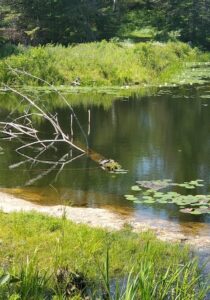
Painted turtles are often seen sunning themselves on logs in our ponds. Can you find the turtle?
Water provides some safety to turtles, which explains their preferred habitat. It is common in our region to see painted turtles sunning themselves on a prominent rock or half sunken log in our ponds and wetlands. If you want to see a painted turtle, pick a sunny summer day and visit any of our preserve ponds like the ones found at Oak Point Farm, Lobster Cove Meadow, or Ocean Point Preserve. Painted turtles are quick to slide into the safety of the dark waters when humans approach, so be sure to walk slowly and quietly as you near them. As the name suggests, painted turtles are beautifully colored, displaying yellow and orange undersides and an olive green shell with red markings around the edge.
Despite their tough exteriors, turtles are susceptible to many manmade threats such as roads and vehicles, habitat loss and fragmentation, pollution, and collection for the pet trade. These are some of the reasons behind Maine’s endangered, threatened, and special concerned turtles. A lot of those threats can be decreased with our help. Drive slowly near waterways and help turtles cross the road when it is safe to do so. Observe turtles in their natural surroundings and leave them there. Support BRLT and other land conservation organizations that preserve their habitat. And finally, if you see a turtle or a sign of one, feel free to pass it along to me, “Turtle Tracey”, at thall@bbrlt.org.
